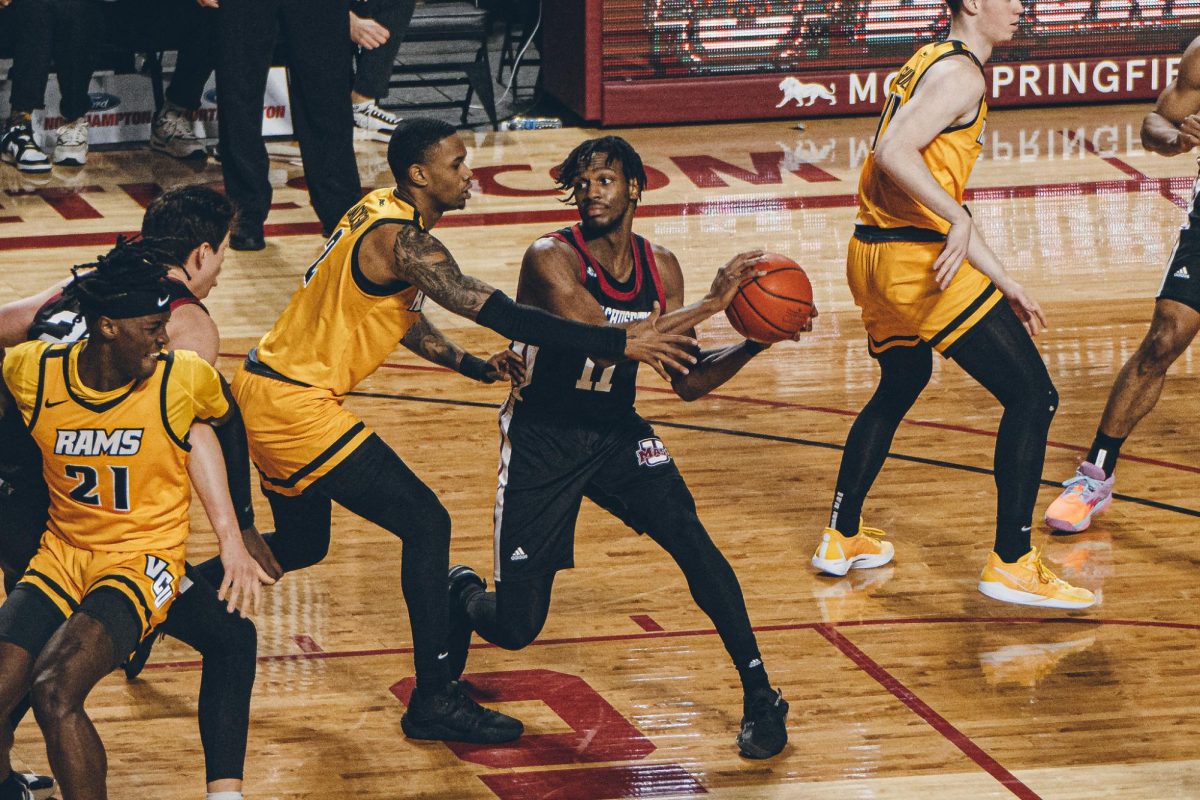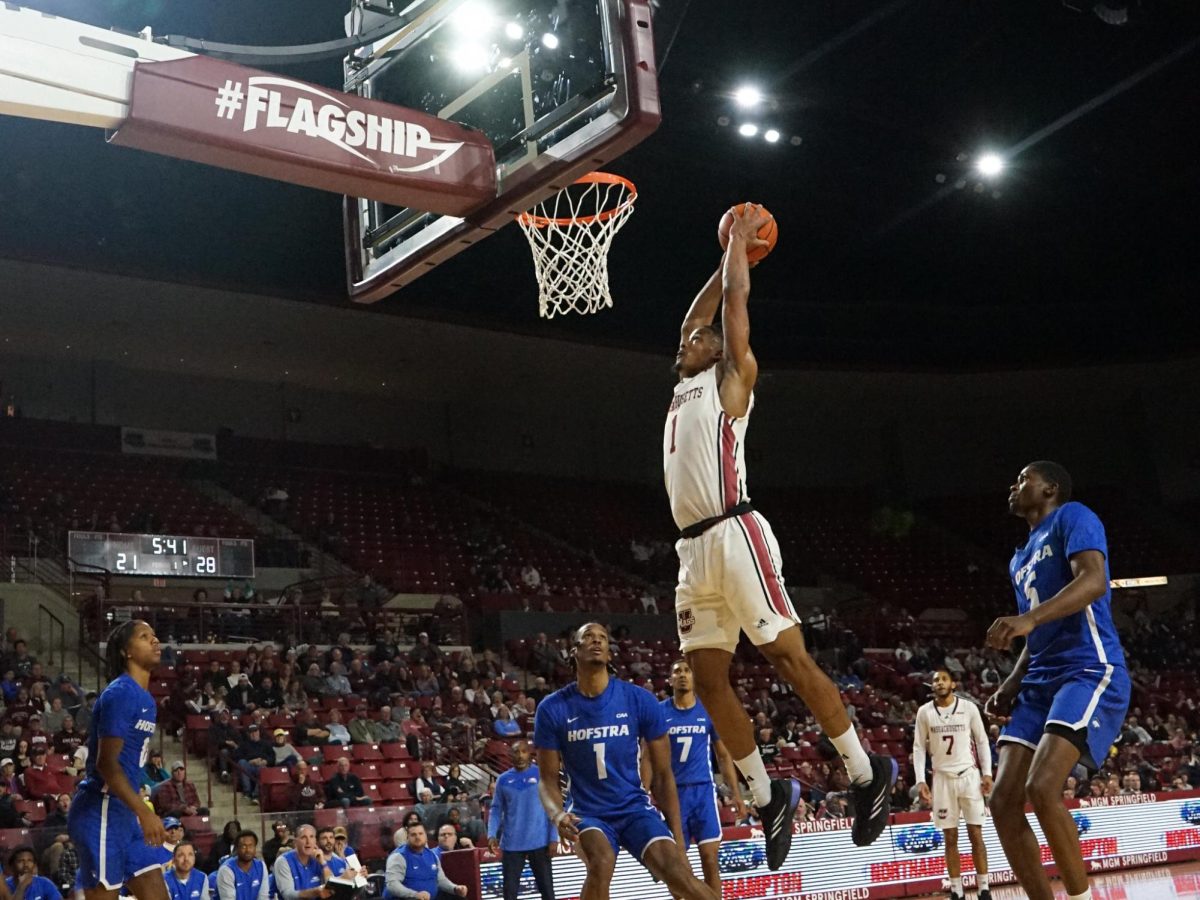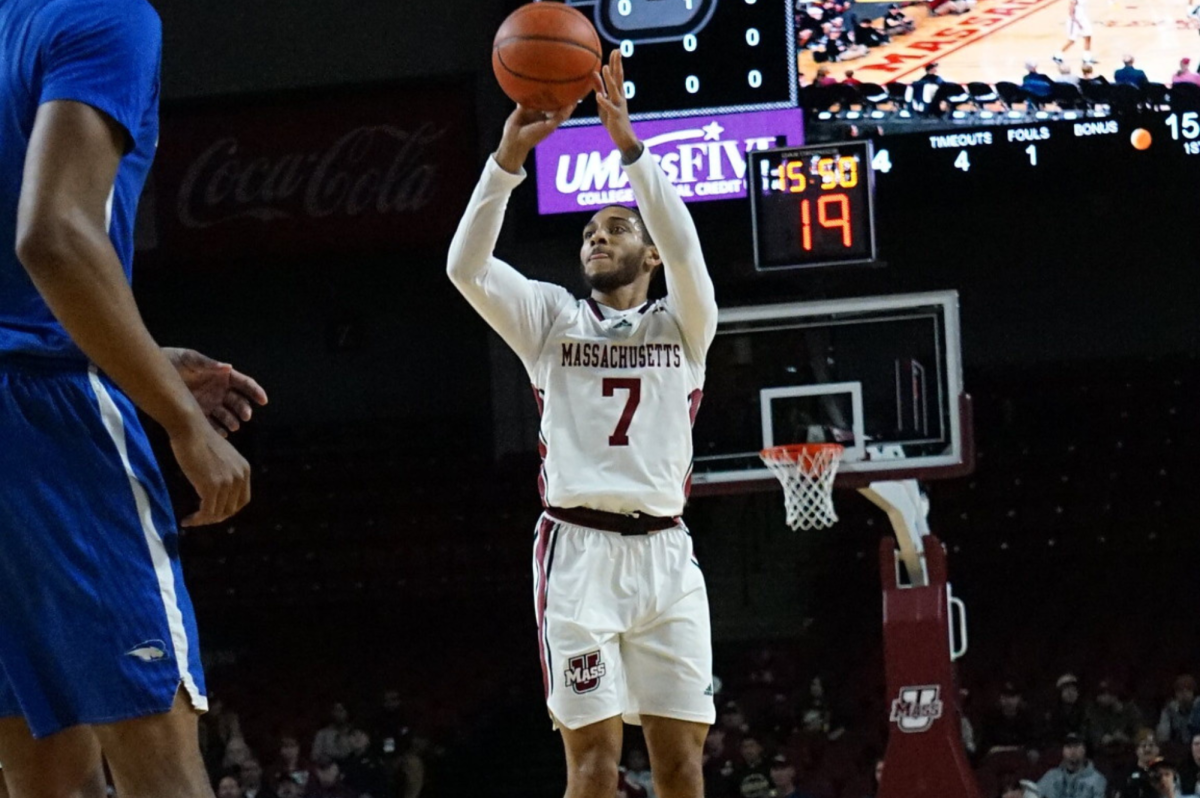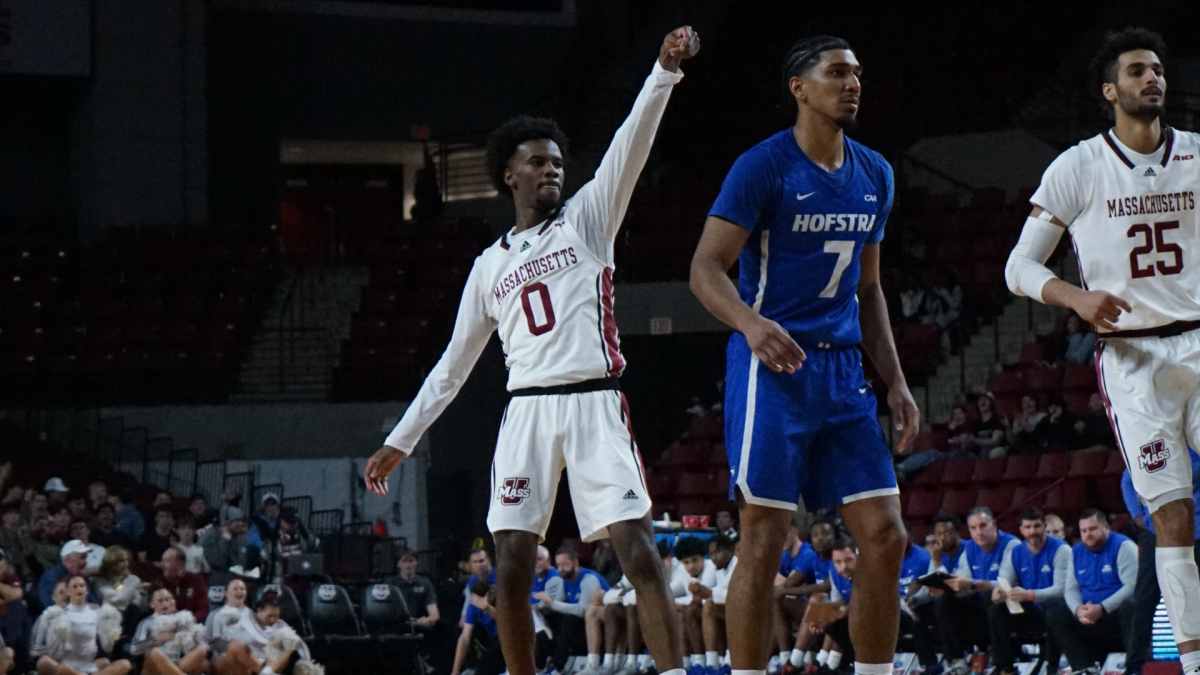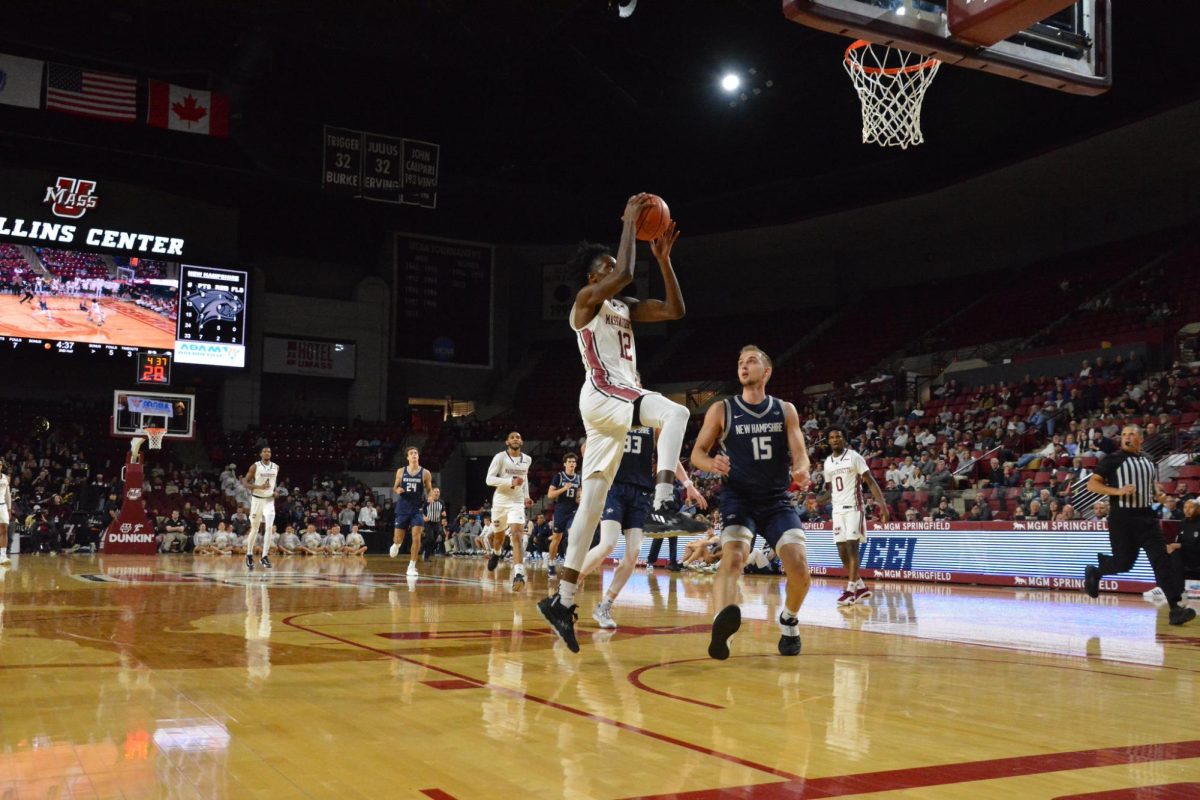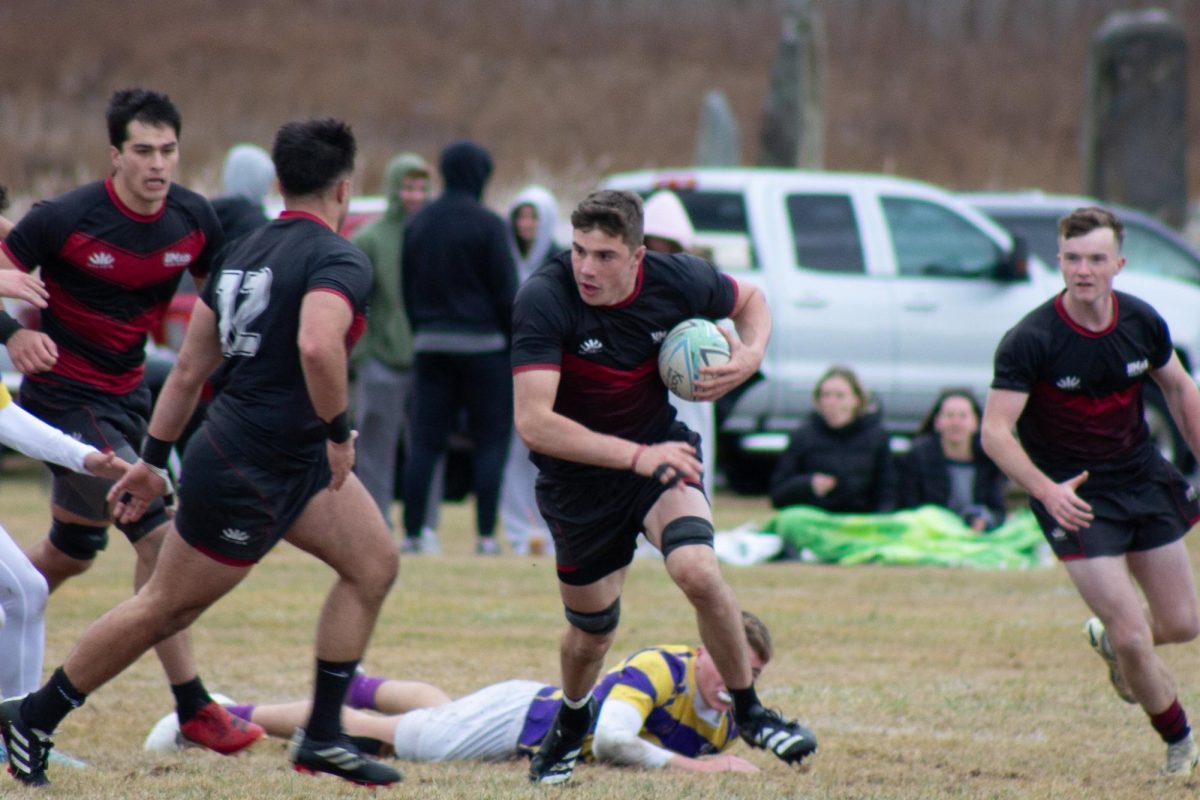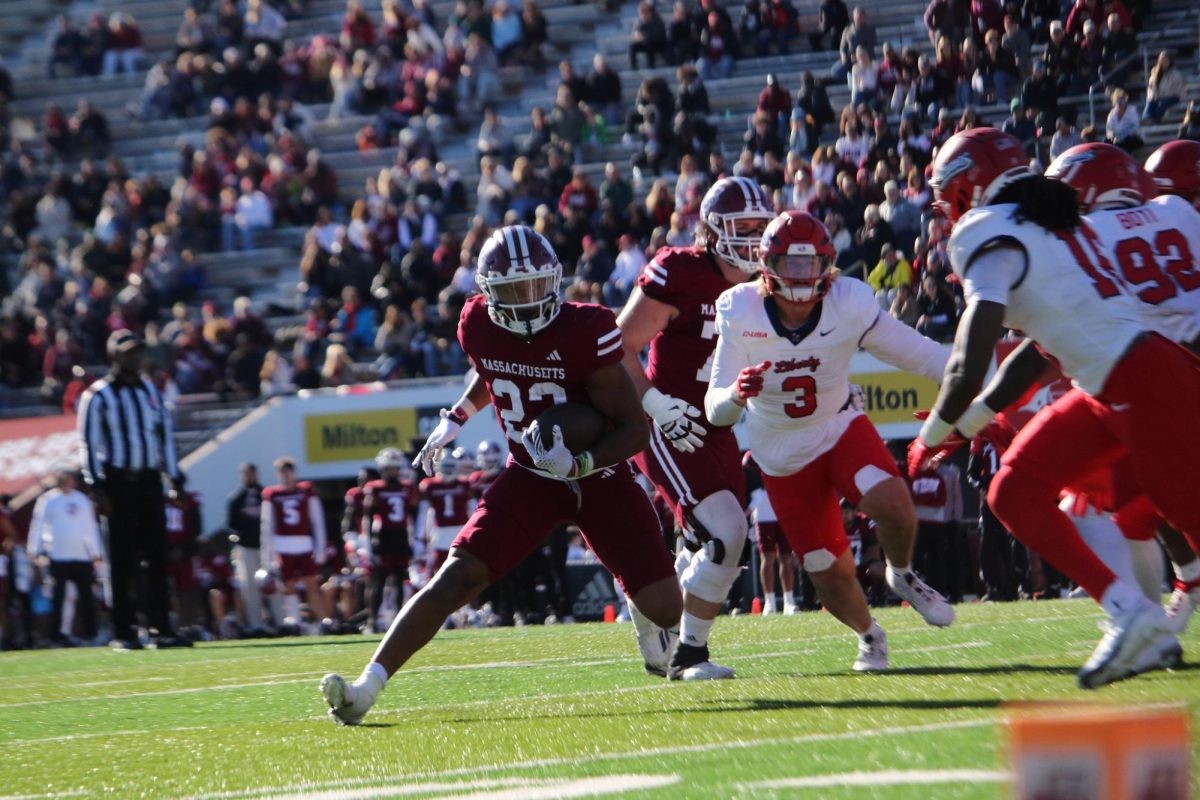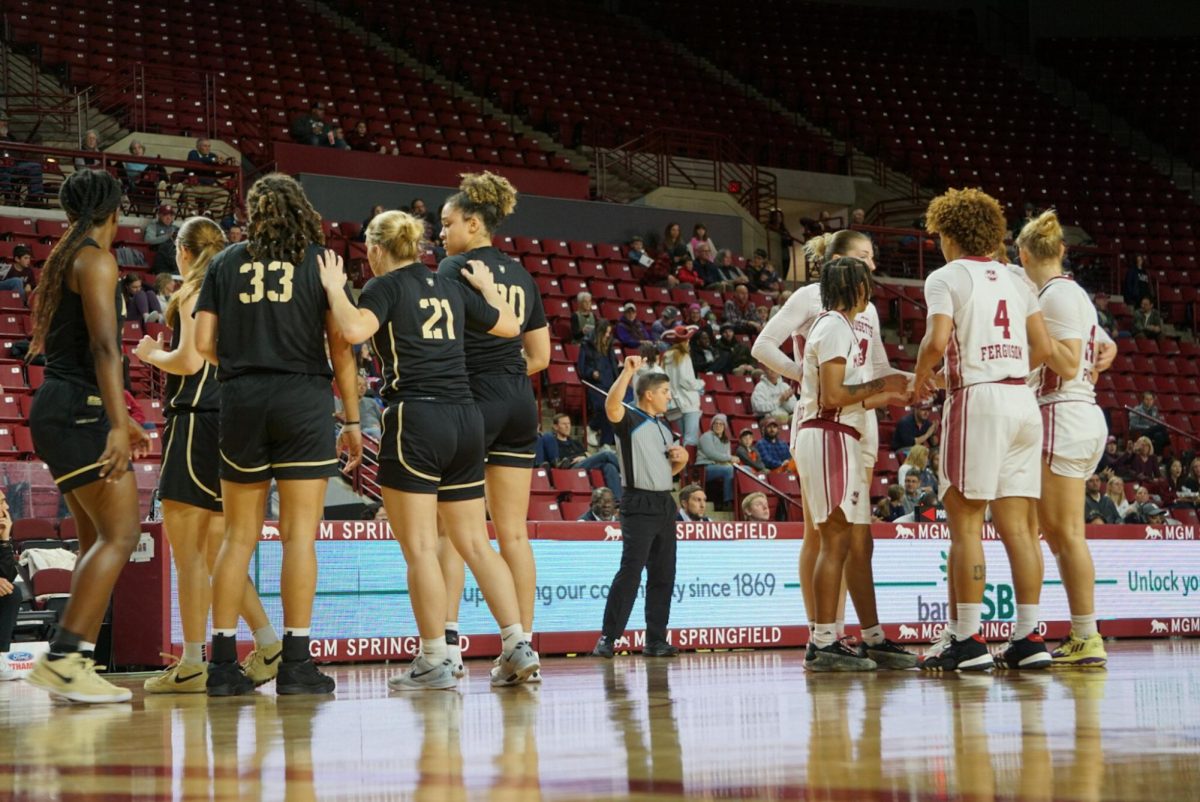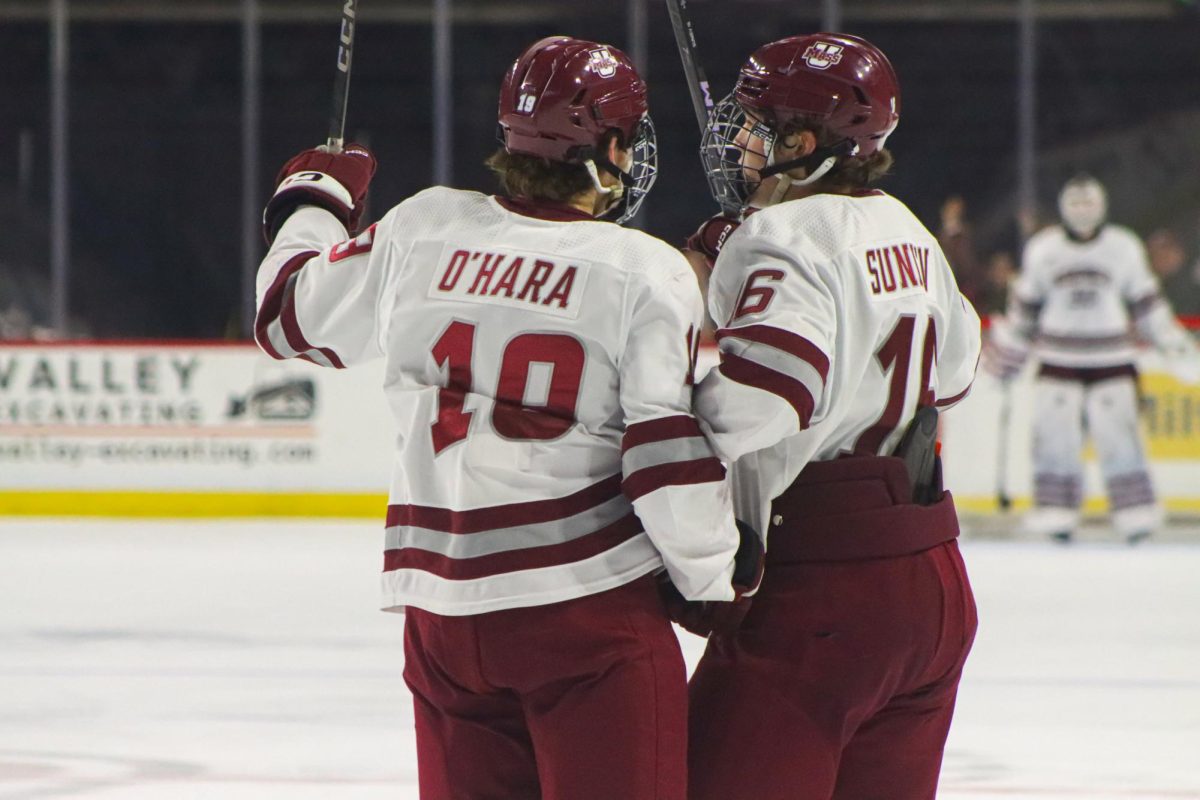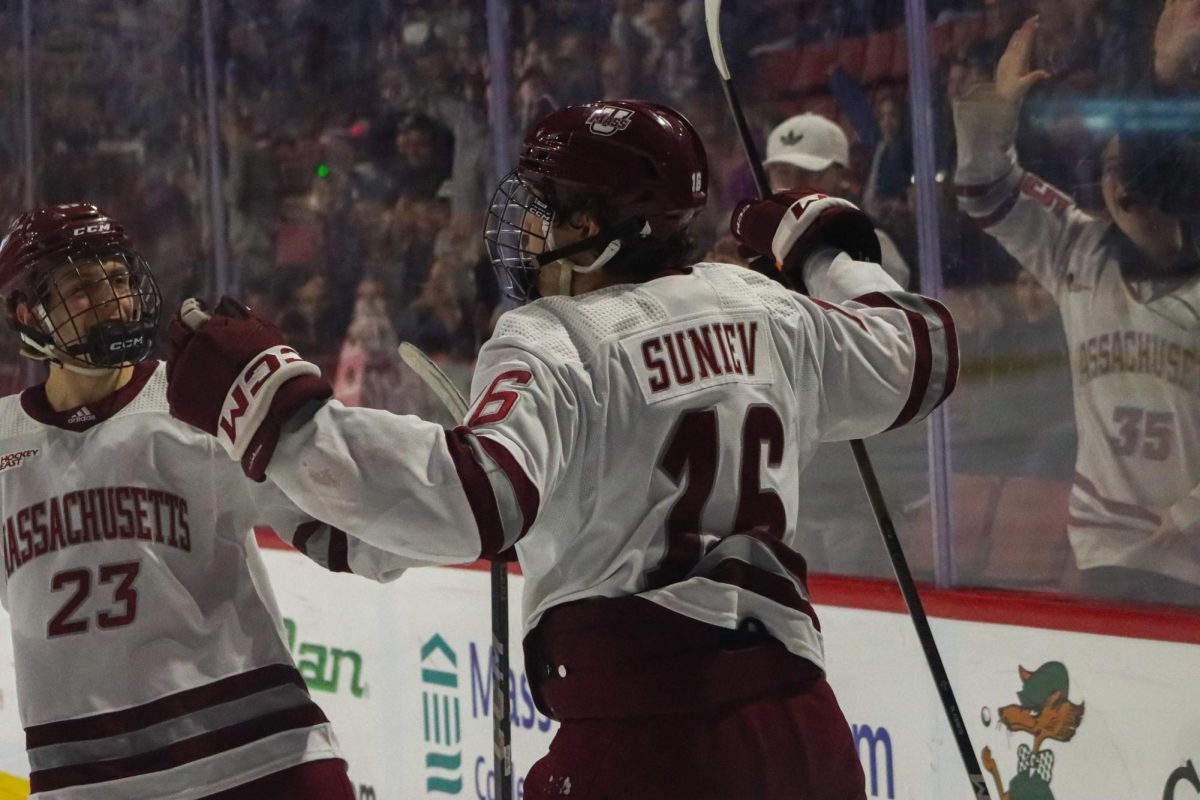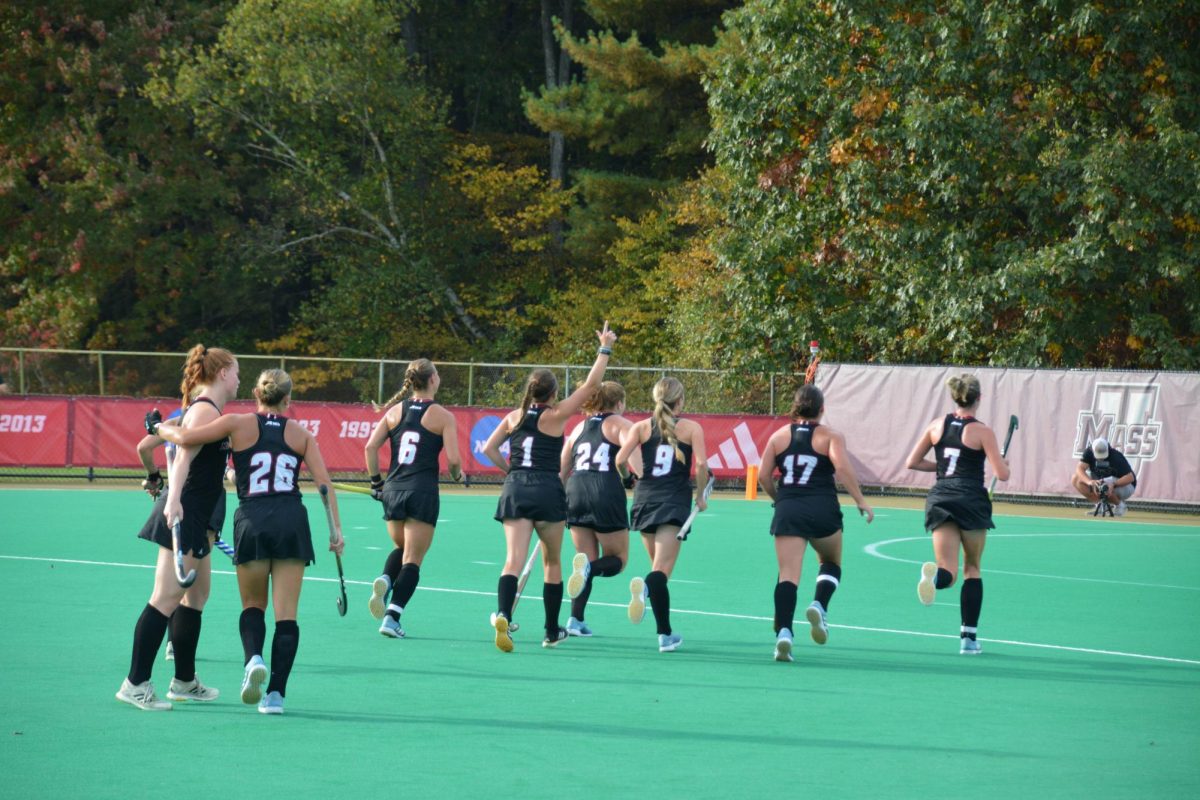It’s hard to make a statement that a basketball team has improved when one of its better players is sidelined for the remainder of the season, and that’s certainly not the case with the Massachusetts men’s basketball team with guard Jesse Morgan out for the year with a torn ACL.

So, while nobody could nor should make a case that the Minutemen are better off without him, one can’t deny the fact that UMass (14-6, 4-3 Atlantic 10) has played a significantly smarter brand of basketball on the offensive end with Morgan reduced to the role of spectator.
Through the first 14 games of the season, the Minutemen had to face the music: They were a 3-point shooting team that struggled to make 3-pointers.
UMass was chucking up treys from all over the court, hoisting up just north of 24 shots from beyond the arc per game, while converting on just 31 percent of them.
And when Morgan, one of their better 3-point shooters, went down on Jan. 10, the Minutemen had a choice to make: Either continue to toss up triples and hope to shoot their way out of their extended funk, or try something else.
Smartly, they went with the latter.
And as it turns out, a new strength emerged in the post, which was a far cry from a team that once relied heavily on jump shooting and guard play to pave its way to the National Invitation Tournament Final Four last year.
Forward Cady Lalanne is one of the big men that have stepped up – and then some – to help make up for the scoring void left by Morgan’s absence. Sampson Carter and Terrell Vinson round out a strong frontcourt that can make a living down in the paint and provide high-percentage looks, as opposed to deep, contested 3-pointers.
What makes the group so affective is their wide range of abilities and skill sets. Lalanne uses his 6-foot-9, 250-pound build and physicality to attack defenders by backing them down around the rim to create better shot attempts.
Lalanne also uses his size to give UMass a bona fide offensive rebounder, which it lacked earlier in the year. Carter is an athletic big man that can not only run the floor, but also use his quickness to get to the basket. Last, but certainly not least, is Vinson, whose mid-range pull-up jumper and toughness on the block give the Minutemen yet another option in the paint.
If you’re like me, you may be asking yourself “Where has this sort of production been all year, especially while Morgan was healthy?”
“I feel like as the season went on, we started finding out that it’s a lot easier if we just post up and work inside-out, now that Jesse isn’t here anymore,” Lalanne said before practice on Tuesday.
But in order for UMass to start throwing the ball in the post more consistently, it all came down to Lalanne’s conditioning. Lalanne had struggled to get in game shape early in the season after recovering from a toe injury that sidelined him for almost all of last year.
But the sophomore couldn’t have picked a better time to start to show signs of the dominant post player that UMass coach Derek Kellogg and those familiar with the team expected this year.
Over the last seven games, Lalanne has averaged 11.1 points per game on a ridiculous 61.2 percent from the floor, while coming off the bench to play 22.6 minutes a night. A lot of that could be a result of his newfound role coming off the bench. Lalanne started the first six games of the season, but was replaced by Carter in the starting lineup after Lalanne was suspended for a game after an off-the-court incident.
But Kellogg seems to like the option of Lalanne off the bench, and due to his success in the role, it’s hard to find fault with that.
Coming into the season, Lalanne was thought to be the difference with this year’s team, since a reliable post presence was dearly missed a year ago, and would take the randomness out of an offense that was predicated on the fast break and backcourt play.
And with a grueling A-10, isn’t a team better off with strong post play rather than guard play? After all, post play is a far more consistent option than a team dominated by guards that rely on hitting jump shots and are prone to poor shooting days, which the Minutemen suffered through for the first 14 games.
As I said at the start, I’m not trying to make the case that UMass is better off without Morgan. His injury merely forced the team to look in the mirror and make a change.
But if Morgan were still healthy, filling his lockdown-defender role and hitting timely shots, combined with the Minutemen’s newfound commitment to working the ball inside-out, who knows what kind of ceiling this team could have reached.
Lalanne doesn’t think their mentality would change from the one they have now.
“If (Jesse) was still here, I feel like we’d be doing the same thing,” Lalanne said of working the ball inside. “It works a lot better like that.”
But there’s no sense in playing the what-if game. UMass will have to continue playing with the cards it’s been dealt, which means playing with only three legitimate guards and hoping its play in the paint can carry it through the conference tournament and possibly to the promise land that is the Big Dance.
Time will tell if that will be enough.
Stephen Sellner can be reached at [email protected] and followed on Twitter @Stephen_Sellner.

